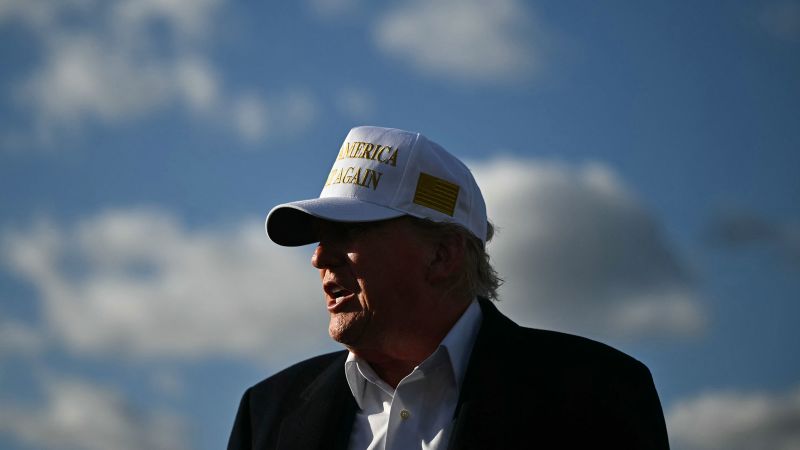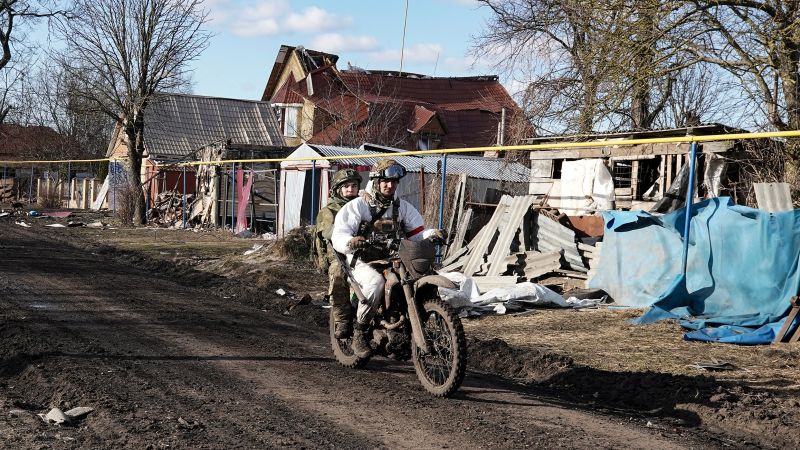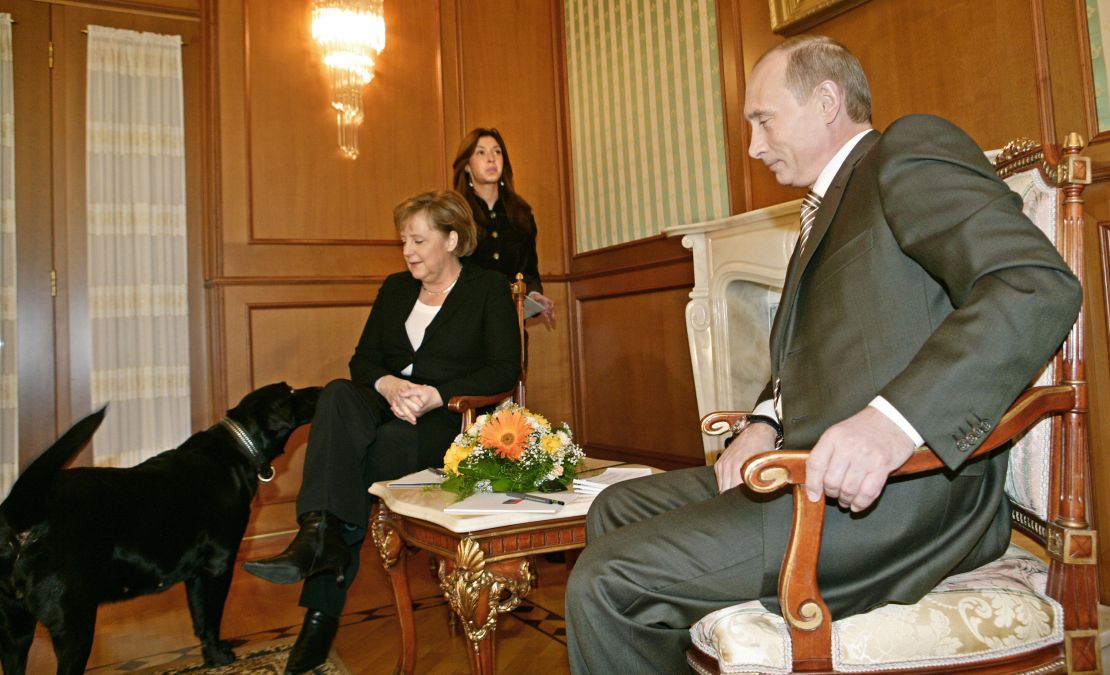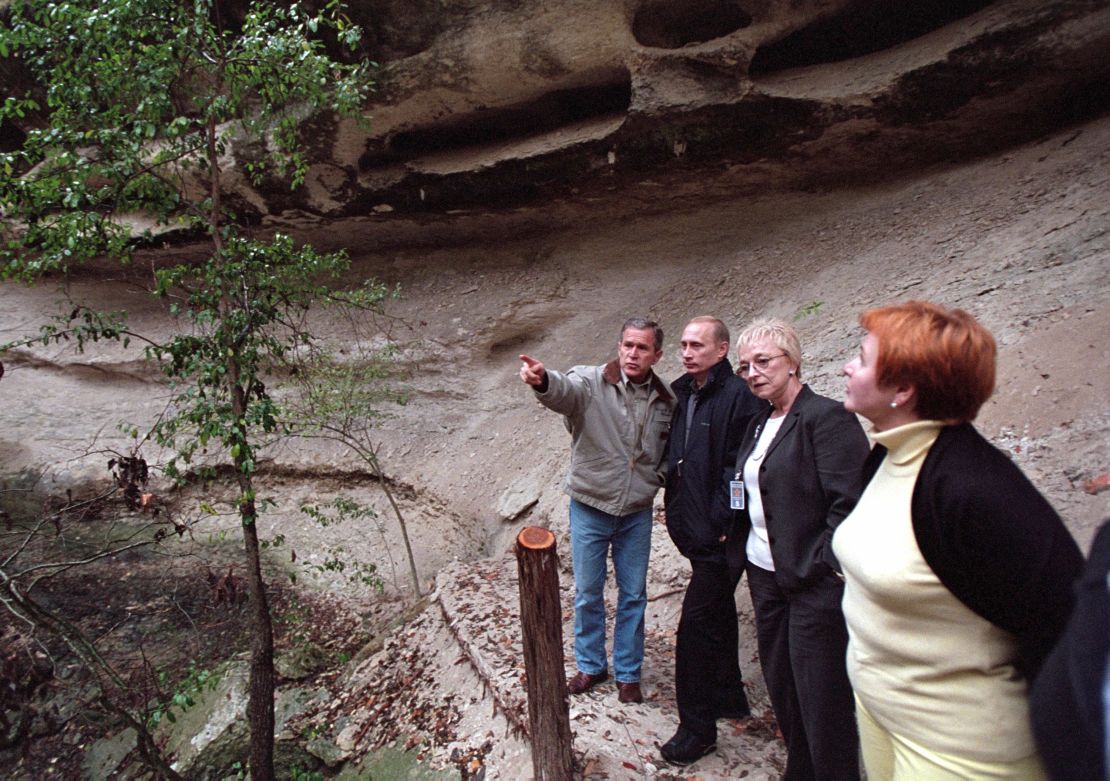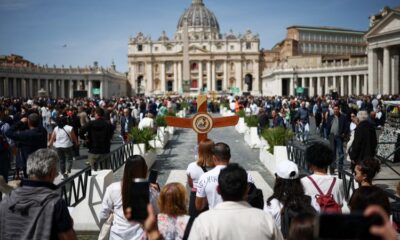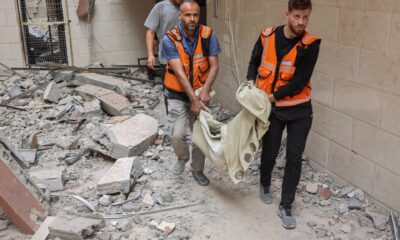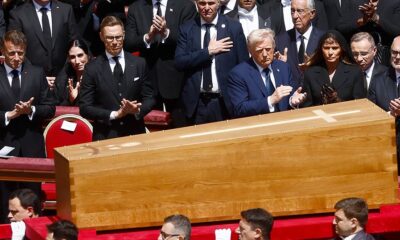CNN
—
Inside the soaring nave of St. Peter’s Basilica on Saturday, the quiet hush of world leaders paying respects to the late Pope Francis was briefly interrupted by a flurry of activity in a secluded corner near the entrance doors.
Men in black robes rushed over with red-cushioned chairs. A contingent of American Secret Service agents hovered, alert, from a distance. Dignitaries walking past gave the scene wide berth.
Straining to catch a glimpse of what was happening, the visitors saw a remarkable scene unfold: President Donald Trump, knee-to-knee with his Ukrainian counterpart Volodomyr Zelensky, in their first face-to-face meeting since an explosive Oval Office row ended with the Ukrainian’s eviction from the White House 57 days earlier.
“I see him as calmer,” Trump said of Zelensky the next day. “I think he understands the picture. And I think he wants to make a deal.”
Saturday’s meeting underneath the Vatican vaults was a remarkable collision of diplomacy and coincidence, quietly orchestrated by both sides at a moment of reckoning in the three-year-long war, according to multiple American and European officials familiar with the matter.
Behind the scenes, European officials had been encouraging a meeting between the men for days, hopeful an in-person meeting in Rome could prove fruitful at a fraught moment in negotiations to end the war.
Trump’s criticism after the meeting of Russian President Vladimir Putin was his strongest to date, and sparked new hope in Ukraine and beyond that the US leader could be adopting a different approach to a conflict he once promised to end on the first day of his presidency.
“I want him to stop shooting, sit down and sign a deal,” Trump said of Putin on Sunday as he returned to Washington to begin what aides say will be a critical week in determining the future of US-led efforts to broker an end to the war. “We have the confines of a deal, I believe, and I want him to sign it and be done with it and just go back to life.”
Whether Trump maintains the critical approach to Putin is anyone’s guess. History has shown Trump far more conciliatory toward the Kremlin leader, sometimes echoing his talking points.
And for all of the Vatican meeting’s symbolism — peace talks inside the marble walls where Pope Francis had once called for peace — it was far from clear afterward what if anything had actually changed in the efforts to end the war.
Still, for a president who said this month he was “not a fan” of Zelensky and accused him of prolonging the invasion of his own country, it was a remarkable shift in blame after the encounter inside St. Peter’s.

It was a meeting neither side seemed certain would come to pass, and both US and Ukrainian officials were careful not to telegraph any expectations ahead of time. Heading into Rome on Friday, Trump suggested he wouldn’t have time for extensive meetings, and questioned whether it would be quite suitable to engage in foreign policy while honoring the late Pope Francis.
Inside the Vatican the next day, as Trump and Zelensky found themselves walking through the building at the same time, it still wasn’t clear to people watching the encounter unfold whether they would in fact sit down for talks.
But Vatican officials were quick to mobilize, bringing three chairs to a corner of St. Peter’s Basilica where Trump and Zelensky could be sequestered from fellow world leaders and speak in private.
The third chair was originally intended for a translator, one person familiar with the matter said, seeking to put to rest speculation it could have been meant for French President Emmanuel Macron, who greeted both Trump and Zelensky in the minutes before the huddle began.
Macron had been among the leaders who was hoping Trump and Zelensky would be able to speak directly in Rome. But when it came time for them to sit down, Macron walked away after exchanging words with Trump, leaving the US and Ukrainian leaders to speak directly.
“The thing he was determined to do was to talk to Zelensky face-to-face and talk about how we’re going to get the largest land war in Europe to an end,” US National Security Adviser Mike Waltz, who was in Rome, said on Fox News. “Both sides have to want that.”
With no aides present, the precise contours of what the two men discussed underneath a massive painting of Jesus’s baptism remain closely held. Only cursory readouts were provided afterward.
But a day later, Trump told reporters Zelensky had asked him for more weapons, which he said was typical, and said they briefly discussed the issue of Crimea — the peninsula Russia annexed in 2014, which the US would recognize as Russian under an American peace proposal.
If Zelensky had protested that concession, Trump seemed unmoved.
“I don’t know how you can bring up Crimea,” he said Sunday. “That’s been a long time.”
Trump’s efforts to end the Ukraine war have become a major frustration as he approaches his hundredth day in office. He has told advisers that mediating an end to the conflict is harder than he expected.
Some of Trump’s advisers continue to worry they are wasting their time trying to resolve a conflict that has shown little signs of waning. Trump himself said Sunday he was “surprised and disappointed” that Russia had launched a missile assault on Kyiv as the talks were proceeding, and pondered whether Putin was “tapping” him along.
Perhaps as a way to pressure both sides to reach a deal, Trump’s top diplomat suggested Sunday the end-point in US efforts was approaching.
“This week is going to be really important week in which we have to make a determination about whether this is an endeavor that we want to continue to be involved in, or if it’s time to sort of focus on some other issues that are equally, if not more, important,” US Secretary of State Marco Rubio said Sunday on NBC.
Yet for all of the difficulties in negotiating a settlement, the meeting Saturday provided at least some hope to Trump and his aides that diplomacy was possible, at least with the Ukrainians.
For his part, Trump also appeared taken by the grandeur of the setting.
“It was a beautiful meeting,” Trump said in New Jersey. “I’ll tell you it was the nicest office I’ve ever seen.”
This story has been updated with additional details.

